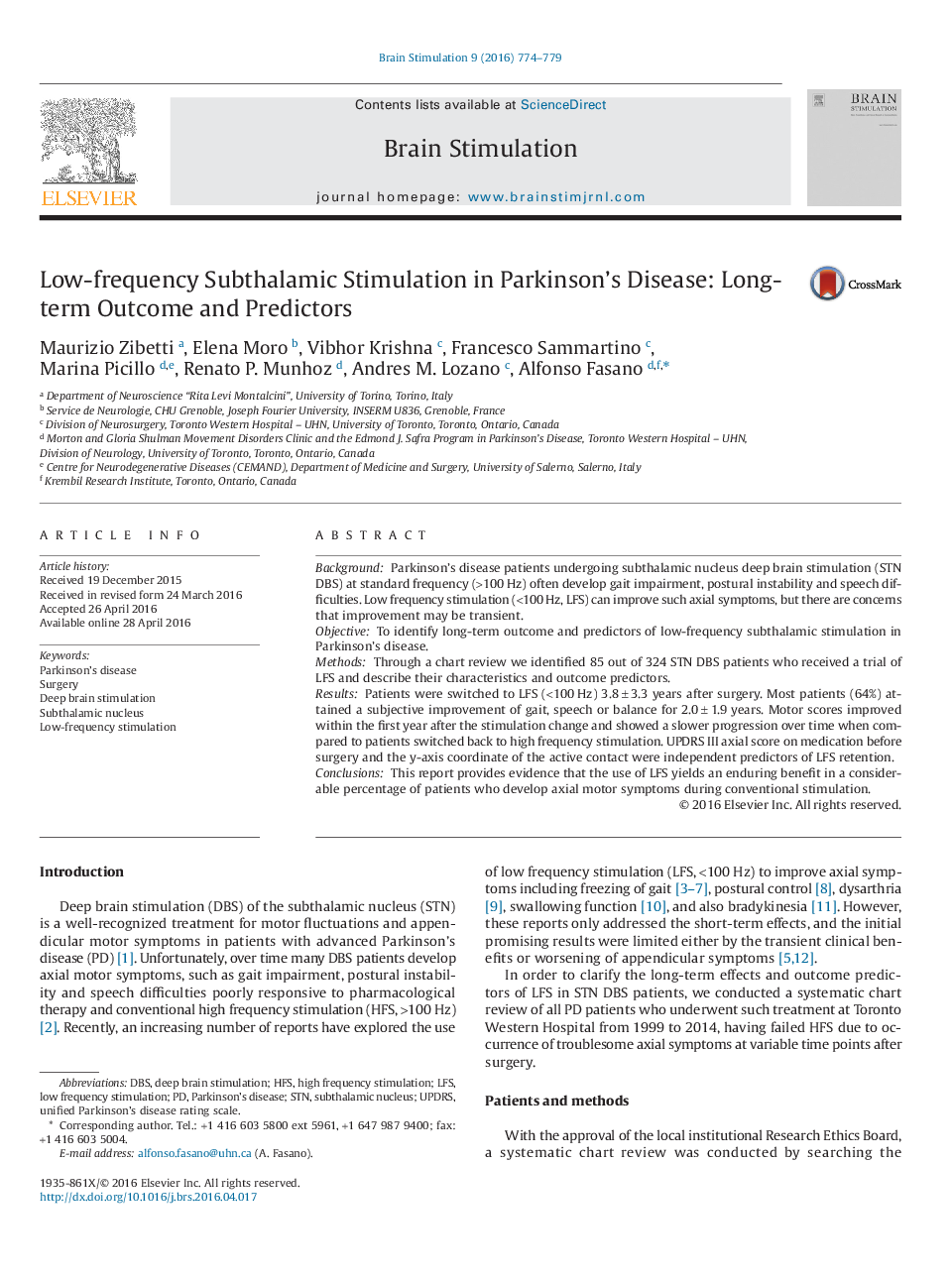| کد مقاله | کد نشریه | سال انتشار | مقاله انگلیسی | نسخه تمام متن |
|---|---|---|---|---|
| 3038703 | 1406330 | 2016 | 6 صفحه PDF | دانلود رایگان |
• Low frequency stimulation (LFS) can improve axial symptoms, but there are concerns that improvement may be transient.
• We identified 85 STN DBS patients who received a trial of LFS and describe their characteristics and outcome predictors.
• Most patients (64%) attained a subjective improvement of gait, speech or balance for 2 years.
• Axial score before surgery and the y-axis coordinate of the active contact were independent predictors of LFS retention.
• LFS may yield an enduring benefit in patients with axial motor symptoms during conventional stimulation.
BackgroundParkinson's disease patients undergoing subthalamic nucleus deep brain stimulation (STN DBS) at standard frequency (>100 Hz) often develop gait impairment, postural instability and speech difficulties. Low frequency stimulation (<100 Hz, LFS) can improve such axial symptoms, but there are concerns that improvement may be transient.ObjectiveTo identify long-term outcome and predictors of low-frequency subthalamic stimulation in Parkinson's disease.MethodsThrough a chart review we identified 85 out of 324 STN DBS patients who received a trial of LFS and describe their characteristics and outcome predictors.ResultsPatients were switched to LFS (<100 Hz) 3.8 ± 3.3 years after surgery. Most patients (64%) attained a subjective improvement of gait, speech or balance for 2.0 ± 1.9 years. Motor scores improved within the first year after the stimulation change and showed a slower progression over time when compared to patients switched back to high frequency stimulation. UPDRS III axial score on medication before surgery and the y-axis coordinate of the active contact were independent predictors of LFS retention.ConclusionsThis report provides evidence that the use of LFS yields an enduring benefit in a considerable percentage of patients who develop axial motor symptoms during conventional stimulation.
Journal: Brain Stimulation - Volume 9, Issue 5, September–October 2016, Pages 774–779
